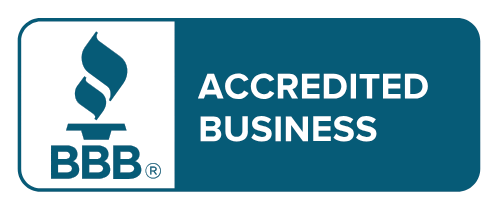Trends in Future-Proofing Custom Homes: Discover Innovative Strategies for Lasting Value

Trends in Future-Proofing Custom Homes: Discover Innovative Strategies for Lasting Value
Building a custom home today means thinking ahead. You want your home to last. You want it to be smart and safe, too. This article will show you trends in future-proofing custom homes. These trends help you design a house that meets your needs today and tomorrow. Let’s dive in!
Key Takeaways
- Future-proofing is about planning for today and tomorrow.
- Smart home technology makes your home easier to manage.
- Flexible spaces can adapt as your family grows or changes.
- Durable materials ensure your home lasts longer.
- Sustainable practices help the environment and your wallet.
To learn more about the benefits of using innovative design trends when building your home, explore our insights on modern architectural practices.
Understanding Future-Proofing in Custom Homes
Future-proofing is the idea of making a home ready for what comes next. This means building a house that is not just for now but also for the future. It’s like preparing for a big storm by making sure your roof is strong and your windows are secure. In Charleston, where the weather can change quickly, this is very important.
The Importance of Anticipating Future Needs
When you build a new custom home, think about your family. Do you plan to have kids? Will your parents move in? Will you work from home? These questions matter. Planning for these changes can save you time and money later on.
Bridging Current Trends With Long-Term Value
Some trends come and go, but you want features that last. For example, open floor plans are popular now, but they also allow you to change how you use the space later. Building a home with this in mind can increase its value down the road.
Current Trend Long-Term Value Example Open Floor Plans Adaptable spaces Living room can become an office Energy Efficiency Lower utility bills Smart thermostats Sustainable Materials Reduced environmental impact Bamboo flooring Incorporating Smart Home Technology
Smart home devices are becoming more common in new homes. These technologies help you control many parts of your house with a phone or tablet. Here are some popular options to consider:
Choosing the Right Smart Home Systems for Adaptability
Start simple. Smart lights are a great first step. You can control them from anywhere. As you get comfortable, you might add smart thermostats, security systems, and more. These systems can often be upgraded, making them a smart choice for future-proofing.
Integrating Technology for Energy Efficiency and Convenience
Energy-efficient devices not only save money, but they also help the environment. For example, smart thermostats learn your habits. They adjust temperatures to save energy. This can be very useful in Charleston's hot summers.
Ensuring Your Smart Home Technology Is Upgradable
When picking smart systems, choose ones that can grow with you. You want technology that can be updated or expanded. This keeps your home modern without needing a complete overhaul.
Additional Smart Technology Options: - Smart smoke detectors - Automated blinds - Home security cameras - Smart irrigation systems
Designing Flexible and Adaptable Spaces
Flexibility in design is key for a future-proof home. Your needs can change, so your space should too. Here are some ideas for creating adaptable areas in your new home:
Planning for Versatile Room Functions
Think about rooms that can serve multiple purposes. A guest room can also be an office. A playroom can turn into a study as kids grow. This way, you don’t need to build more rooms later.
The Role of Movable Walls and Modular Furniture
Movable walls can change a room's size. Modular furniture can fit different spaces and styles. This is great for a home that needs to adapt over time.
Creating Spaces That Grow With Your Family
Design spaces with growth in mind. This might mean having extra bedrooms or a large basement for future needs. You can also include outdoor spaces that are easy to change, like patios.
Choosing Durable and Long-Lasting Materials
The materials you choose can make a big difference. High-quality materials last longer and often need less maintenance. Here are some tips on selecting durable options:
Identifying Materials That Stand the Test of Time
Look for materials that hold up well in Charleston’s climate. For example, brick and concrete are sturdy choices. They resist weather damage better than some other materials.
Balancing Aesthetics and Durability in Material Selection
You want your home to look good and last long. Choose finishes that meet both needs. For example, quartz countertops are beautiful and durable. They withstand stains and scratches, making them a smart choice.
Sustainable Materials for a Future-Proof Home
Using sustainable materials is good for the planet. These materials often last longer and can save you money on energy bills. Bamboo flooring and recycled metal roofs are popular choices. They are strong and eco-friendly.
Table of Durable Materials:
Material Durability Level Maintenance Requirements Aesthetic Options Brick High Low Classic, timeless Concrete High Low Modern, industrial Quartz Medium-High Medium Varied colors & patterns Bamboo Medium Low Natural, warm aesthetic Sustainable Practices for Future-Proof Homes
Sustainability is becoming more important in home building. Here are a few ways to make your custom home more eco-friendly:
Incorporating Renewable Energy Sources
Consider adding solar panels to your home. They can reduce energy costs and increase your home's value. In sunny Charleston, this is a smart choice.
Enhancing Water Efficiency and Waste Reduction
Low-flow fixtures can conserve water. Rainwater harvesting systems can provide water for your garden. These options help the environment and can lower your bills.
Using Green Building Certifications as a Guide
Some organizations offer certifications for green building practices. These can guide you in making eco-friendly choices. Look into options like LEED or Energy Star to find the best fit for your home.
To ensure your home meets environmental standards, consider researching eco-friendly building materials.
Conclusion
Thinking ahead is vital when building a custom home. Future-proofing involves smart decisions about design, technology, and materials. By planning for the future, you can create a home that fits your needs today and tomorrow. Whether you are in Charleston or elsewhere, these trends will help you build a better home for years to come.
Start Your New Home Today!
Are you ready to build a custom home that lasts? Consider these trends in future-proofing. At Hunter Baker Homes, we can help you every step of the way. Let’s create a space that fits your dreams and stands the test of time. Contact us today to start your journey to a new home!






